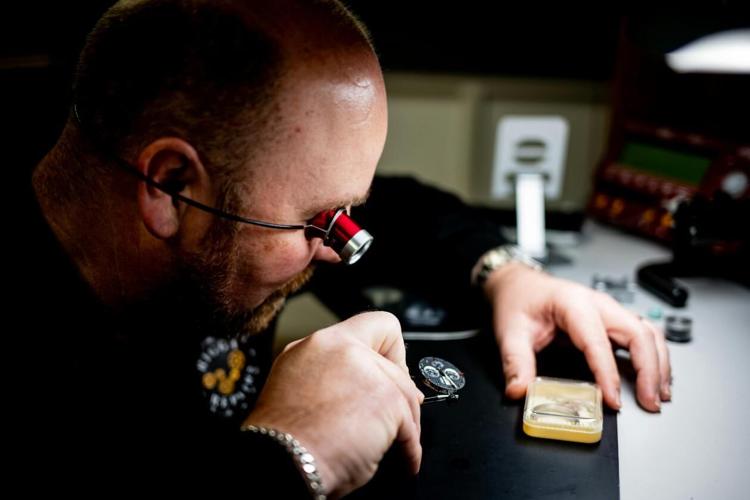
There’s a moment I still remember vividly — I was helping my niece with her science project when we placed a dried leaf under a stereo microscope. The leaf looked ordinary, even boring, to the naked eye. But under the microscope, it transformed. Suddenly we were staring into a landscape of peaks and valleys, tiny rivers of veins, and a forest of delicate fibers. My niece gasped. I just smiled — because I felt the same way. We weren’t looking at a leaf anymore. We were looking at a world.
It struck me that somewhere along the way — maybe during adulthood, maybe during the routine grind — we stop looking at things closely. And more importantly, we stop being amazed by them.
The stereo microscope, a device often tucked away in labs and classrooms, has the strange power to break that spell. It’s not just a scientific tool. It’s a portal back to wonder.
Beyond the Textbook
Let’s be honest: most of us were introduced to microscopes in school. Usually, it was a compound microscope. Thin slices of onion skin. Pond water. A blurry squiggle that was supposedly alive. We looked, we nodded, we moved on. It was science. It was a grade.
But stereo microscopes? They’re different.They don’t demand that you prepare slides or dye specimens. You can simply pick something up — a feather, a coin, a bug you found on your windowsill — and look. There’s no need for fancy equipment or technical know-how. Just your eyes, and your curiosity.
The stereo microscope doesn’t turn the world into a scientific diagram. It shows you the world as it is, only closer. Textures become mountains. Hairs become forests. Suddenly, your fingernail isn’t just a piece of keratin — it’s a living surface with ridges, valleys, maybe a tiny scratch you hadn’t noticed.
That shift — from distant observation to intimate discovery — is powerful. Especially for kids. Especially for people who think they’ve “seen it all.”
The Joy of the Unexpected
One of the best things about using a stereo microscope is that you don’t know what you’ll find. Sure, you can look at textbook examples, but the real fun starts when you go off-script.
The stitching on your jeans. The ridges of your fingerprint. A grain of sugar. A speck of dust from your windowsill. These are things we normally ignore. But under a stereo microscope, they become alien and beautiful — evidence that even the smallest parts of our world are complex, strange, and worth noticing.
There’s a kind of humility that comes with this, too. We spend so much time zooming out — trying to go faster, see more, do more — that we forget how much there is in the tiny, in the close-up. The stereo microscope reminds us to zoom in.

A Tool for Families, Artists, and the Just-Plain-Curious
You don’t have to be a scientist to enjoy a stereo microscope. In fact, I’d argue that non-scientists might love it even more.
Parents and Kids: If you’re a parent looking for something real to do with your child that doesn’t involve a screen, this is it. Go outside. Pick up random things. Then come home and explore them under the scope. It’s hands-on, it’s collaborative, and it sparks conversation.
Artists and Designers: Texture, structure, pattern — if you work in visual media, a stereo microscope is a treasure chest of inspiration. Many textile designers use them to study natural fibers; illustrators examine insects and leaves for reference. It’s a muse with a lens.
Crafters and Makers: Ever tried fixing a wristwatch? Polishing jewelry? Inspecting tiny welds or seams in 3D printing? A stereo microscope isn’t a luxury — it’s a game-changer. It gives you the depth and clarity you need to actually work with small things, not just look at them.
Collectors: Stamps, coins, minerals — imagine seeing your collection in a whole new way. A stereo microscope can reveal the tiniest variations, defects, or features that add value (or stories) to the objects you love.
Affordable Curiosity: You Don’t Need a Lab
One of the myths around microscopes is that they’re expensive or complicated. And yes, some models used in medical or industrial fields can cost thousands. But for everyday use, there are fantastic stereo microscopes available for under $200 — some even with built-in LED lighting and camera attachments.
They don’t require calibration or fragile slides. You just plug in, turn on the light, and start exploring. You can even find digital models that show the image on a screen — perfect for families or groups who want to look together.
It’s one of the rare tools that offers both instant gratification and endless discovery. That’s a pretty good deal.
Relearning How to See
Using a stereo microscope regularly has changed how I see the world. Not metaphorically — literally. I now pause before tossing out a broken pencil to examine the wood grain. I notice the matte vs. glossy contrast on different leaves. I appreciate how delicate the bristles are on a toothbrush.This kind of seeing isn’t about analysis. It’s about appreciation.
And maybe that’s the most powerful thing the stereo microscope does. It doesn’t just magnify the object. It magnifies our attention. It tells us: “Hey, slow down. There’s more here than you think.”
Bring the Small World Closer
If you ask me to recommend a good place to buy a stereo microscope, the first thing that comes to my mind is the lakimi website. I have shopped there many times and the experience is very good. It is considered a treasure website of mine.
We live in a culture that prizes scale. Big ideas. Big data. Big ambitions. But sometimes the most meaningful experiences happen when we go small. When we look closely. When we sit down with something tiny and just... pay attention.
The stereo microscope won’t change your life overnight. But it might make you look at a dust mote or a beetle’s wing or a cracked seashell and feel something you haven’t felt in a while: curiosity.
And in a world that moves too fast and feels too loud, that alone is worth slowing down for.
Related Article:
Funding For the Future - How Medical Equipment Financing Can Help Your Practice



Post a comment as Guest
Report
Watch this discussion.
(0) comments
We welcome your comments
Log In
Post a comment as Guest
Keep it Clean. Please avoid obscene, vulgar, lewd, racist or sexually-oriented language.
PLEASE TURN OFF YOUR CAPS LOCK.
Don't Threaten. Threats of harming another person will not be tolerated.
Be Truthful. Don't knowingly lie about anyone or anything.
Be Nice. No racism, sexism or any sort of -ism that is degrading to another person.
Be Proactive. Use the 'Report' link on each comment to let us know of abusive posts.
Share with Us. We'd love to hear eyewitness accounts, the history behind an article.